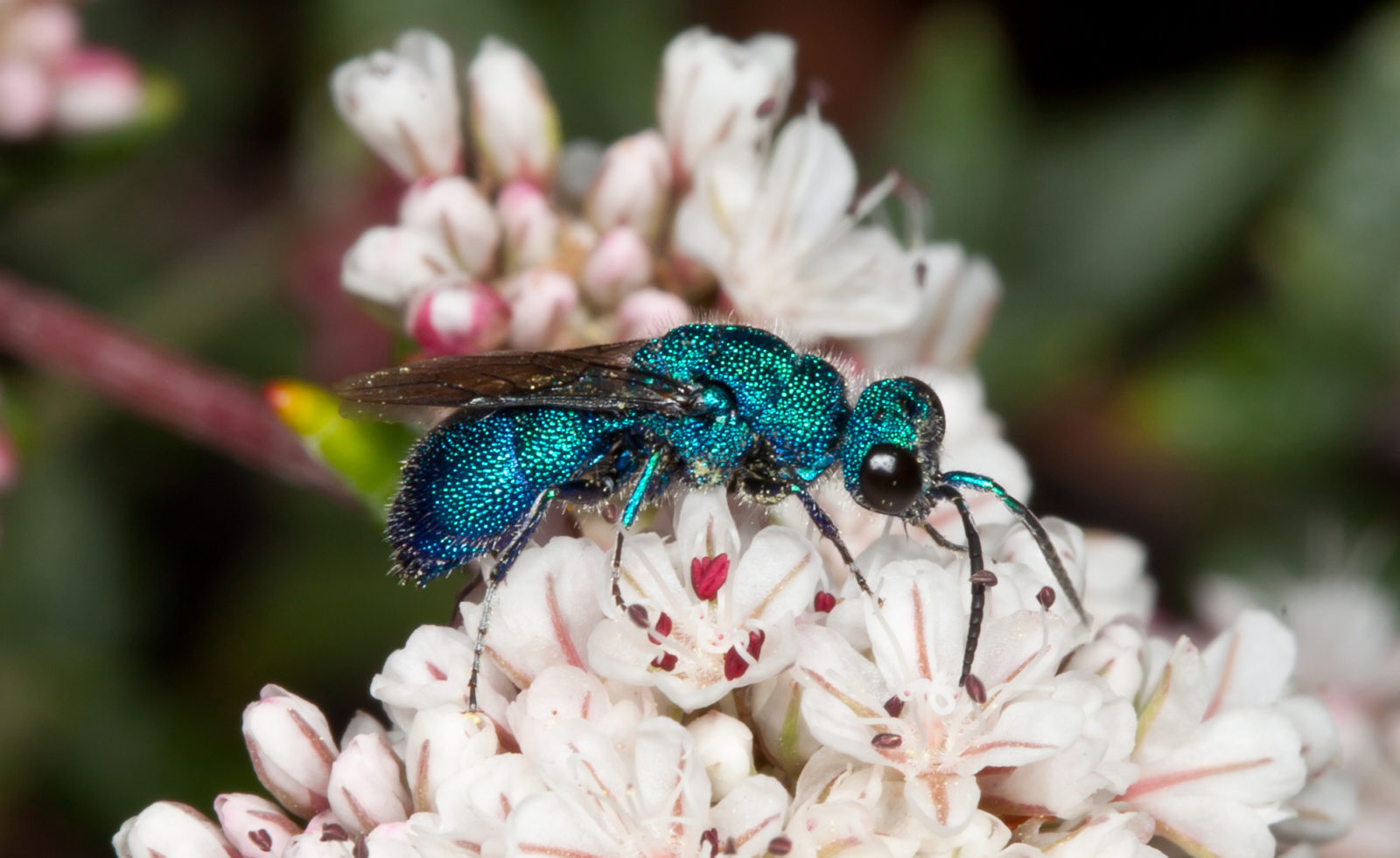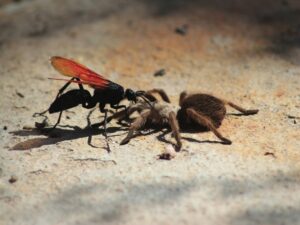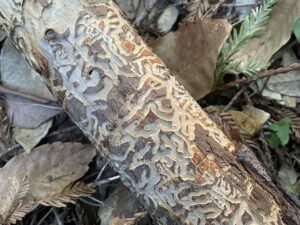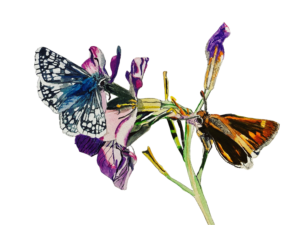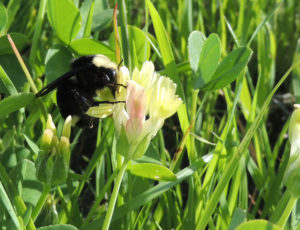A cuckoo wasp is one of those remarkable animals that appears for just a few seconds and makes you wonder what the heck you just saw. Fast-moving and no larger than a skinny housefly, these wasps stand out nonetheless: They glow an outrageous iridescent blue-green, as if illuminated from within.
Cuckoo wasps pack a lot of drama into their tiny bodies. Their color is part of the mystery. These wasps are parasites, and like their namesake cuckoo birds, they lay their eggs in the nests of other species (wasps or bees in this case). Since the cuckoo wasps depend on trickery and camouflage to fool their hosts, you might expect them to be drab. Scientists have not figured out whether the bright colors serve any function, and it wasn’t known until 2009 that the color is actually produced by light refracting through open spaces between six layers of cuticle in the wasps’ exoskeletons.
Cuckoo wasps favor warm Mediterranean climates, and California is a center of cuckoo wasp biodiversity in North America. They are most active in dry, open areas between May and August, with adults foraging on flower nectar as they follow favored routes multiple times a day searching for solitary wasps and bees to parasitize.
Each of the 166 cuckoo wasp species in California targets either a specific host or a specific nest structure. Many species target the nests of mud dauber wasps. One such species, Chrysis angolensis, initially traveled to the New World from Africa by parasitizing mud dauber wasps that nested on the wooden beams of sailing ships. Fortunately for the cuckoo wasps, their larvae’s hatching was well-timed to the sailing ships’ slow progress, and these insects are now established around the Bay Area and port cities in the northeastern United States.
Cuckoo wasps might duck their parental responsibilities, but it’s not exactly an easy living. Cuckoo wasps that parasitize ground-nesting bees and wasps must somehow slip their eggs into an underground burrow without being detected. They first find bees and wasps that are in the process of digging burrows and dragging paralyzed prey into their nests as food for their own young. Female cuckoo wasps then hide nearby to watch the burrow and either try to hitch a ride on the paralyzed prey as it’s being dragged into the burrow or else wait until the host flies off and then slip inside.

Despite their caution, cuckoo wasps are frequently caught in the act of sneaking in, but their oddly pitted exoskeletons protect them from the stings and bites of their hosts. The undersurface of the cuckoo wasp’s midsection is cupped so the wasp can tuck in its legs and curl into a tight ball (like a sowbug or armadillo) to protect its body. Host bees or wasps then have no other option but to grab the balled-up cuckoo wasp in their jaws and carry it outside the burrow to evict it. The unharmed cuckoo wasp simply turns around and tries to get into the burrow again.
Once the female cuckoo wasp succeeds in leaving its eggs in a burrow, the larvae have two survival strategies. Some larvae eat both the host’s larvae and its food items right away; others wait until the host larva eats its food supply and reaches full size, and then they eat the host larva. The first option requires the cuckoo wasp to eat several different kinds of food before it can pupate, while the second strategy lets the host larva do all the work, converting food stores into one juicy meal.
Recent studies suggest that while these brilliantly colored wasps are easily seen and recognized outside the burrow, they are “invisible” in the darkness of the burrow because they camouflage themselves by simulating the smell of their hosts.
So what’s the point of all that color? It may have no function at all. The scientists who reported on the source of the color speculate that the spacing between exoskeleton layers appears to protect the wasp from bites and stings or serve as a thermal buffer from the heat of the ground. And the resulting color may be just an incidental tip-off that a tiny bit of insect intrigue is buzzing by us on the trail.

